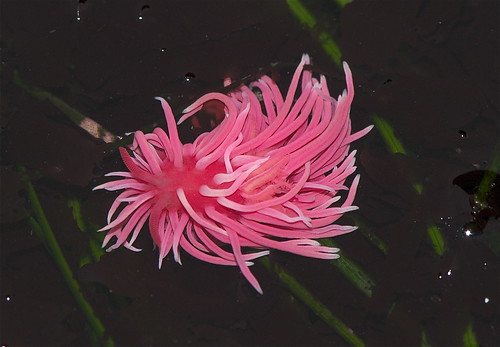There’s a great interview of anthropologist David Howes in the 14 September 2103 NewScientist (subscription access) about the role of synesthesia in marketing products. Synestesia—the sense of mixing senses (experiencing color as a flavor, for example) is often portrayed as a special sense that all of us dabble in, but a select odd few (the Lolita author Vladimir Nabokov, for example) experience in its fullness.
I happen to be a marine ecologist whose second love is marketing and advertising, so I love the combination of multi-sensory perception and figuring out what sells people on stuff. I also think that we can learn from what sells Coke and Tiffany rings for how to spread scientific stories and “sell” conservation.
Howes suggests that some examples of synesthetic advertising just came about through intuitive tinkering, like Skittles candy’s “Taste the Rainbow” slogan, or Canadian national radio’s, “Hear the Big Picture.” But the key to really understanding how synesthesia works in advertising, according to Howes, is good old fashioned ethnography—observing people in their natural environment—to see how they cross-associate sensations. Tellingly, he notes that you won’t get this understanding from a quick focus group or marketing survey. These kinds of controlled studies—akin to the laboratory experiments that Anibal and I call into question in Observation and Ecology—simply can’t capture the complexity of how we mix up our sensory experiences in the real world.
We are pretty early in this science, so there are bound to be pitfalls, especially if you don’t understand different cultural sensitivities. Howes notes that while Westerners view the color white as associated with soft sweet smells, in China, white is associated with foul odors. Another kind of cultural sensitivity came into play in a failed attempt at synesthetic marketing that Howes discusses. In this case, the producers of the “Got Milk” advertisements piped in the smell of cookies to San Francisco bus depots to try to exploit consumers’ childhood association between cookies and milk. San Francisco consumers responded angrily to the campaign, suggesting it was cruel to the homeless people who tended to congregate at bus depots.
I think there are some interesting links to synesthesia in becoming a field ecologist, where you have to mix sensory experiences with other cerebral ways of compiling data and information. One way this comes about is learning Latin names for species if you don’t have a background in Latin. It seems like in some cases, the process of learning these odd names as an adult stimulates a kind of synesthesia. I think of the word Hopkinsia as a lovely soft pink thing, only because when I learned the name of the gorgeous pink nudibranch that plies the intertidal waters of Monterey Bay, it was known as Hopkinsia rosacea--the Hopkins’ Rose. The word Pugettia, I associate with a creepy tactile assault, because while counting intertidal invertebrates in wee hours while plying my fingers through bushes of algae my fingers are inevitably grasped by the kelp crabs Pugettia richii or Pugettia producta, spindly things that resemble enormous ticks, at which point they are instinctively flung across the intertidal, and dutifully marked as present in my field notes.
I’ll say this, if we are ever going to sell Pugettia as a target for conservation (don’t worry, the little buggers aren’t endangered yet) they’re going to have to get a name that feels better.
Rafe Sagarin is an assistant research scientist, marine ecologist, and environmental policy analyst, Institute of the Environment, University of Arizona. He is the co-author of Observation and Ecology with Aníbal Pauchard.




